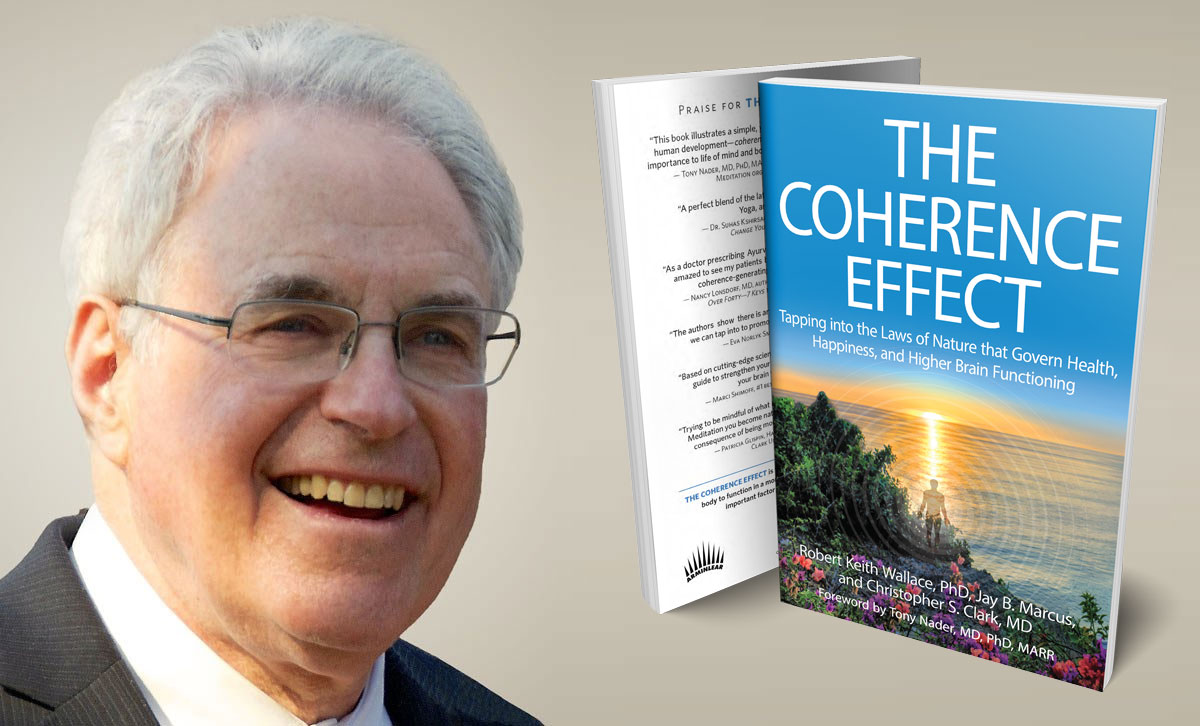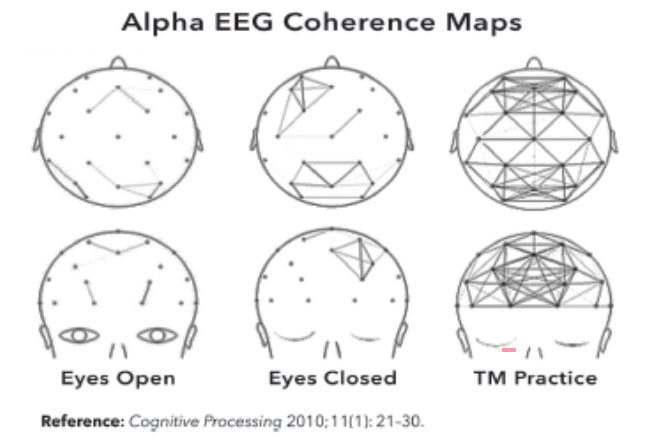Is There a Brain Type at the Basis of Greatness?

Is there a type of brain functioning that allows one executive to see a business opportunity that others completely miss, or allows a lawyer to draw a creative analogy that makes a winning argument in his case? What allows one person to have the kind of coherent thinking that stands out in the crowd? Now, the mechanism that allows a person to think clearly and see opportunities and connections is starting to be understood. And perhaps unsurprisingly, what makes for remarkably coherent thinking is a remarkably coherent brain, especially in the front part of the brain, the part known as the prefrontal cortex. And, fortunately, this kind of brain coherence may be within everyone’s reach.
Dr. Earl Miller, Professor of Neuroscience at MIT and senior author of a 2014 study on animals and their brain waves (“Synchronized brain waves enable rapid learning”), says the phenomenon of brain-wave synchronization likely precedes the changes in brain cells that are believed to underlie learning and long-term memory formation. Brain cells produce electrical signals and these combined signals generate oscillations known as brain waves, which can be measured by electroencephalography (EEG), quantifying the degree to which the brain is coherent. The coherent or synchronized functioning of brain waves has a technical meaning to scientists, but basically means that the brain waves are active in the same way (slow alpha waves, or beta or theta waves, for example) at the same time.
The MIT study shows the interest in this area by some of the most well-recognized research teams in the country, but other top researchers have been touting the value of synchronized brain cells for some time, and not just in animals. Dr. Friedhelm Hummel of the Department of Neurology at the Medical Center at Hamburg University, stated in a 2004 research paper that when we perceive something in the way we should perceive it, large numbers of brain cells in different parts of the brain are “firing in synchrony.” When there is this synchronous firing or activation between distant brain areas, we don’t just see random shapes with our eyes; instead, a part of the brain is communicating with another part and we recognize that the shapes are persons, and the lights have colors, and the letters form words, and so on. On the other hand, if our brain waves do not have at least a normal amount of synchrony, we may have one or another form of dyslexia or other disorder where we recognize a fork as something to eat with but think it’s a spoon, or can’t count the syllables in words, or distinguish left from right.
Hummel and colleagues at his university designed a test to determine what kind of brain coherence in ordinary subjects was most crucial to enhanced performance. They measured the brain waves of the subjects in their study by placing 28 electrodes across the scalp to sense the activity of many different brain areas. The subjects were then given a task to determine if a configuration of dots they were shown visually matched a configuration of raised dots in a Braille text that they touched. This is a seemingly simple test, but the researchers understood that our sight and touch centers are in different parts of the brain so they theorized that there would have to be good communication between those distant brain areas to be successful in quickly determining a match. They found that those subjects with the greatest alpha brain wave coherence (alpha waves are slow brain waves associated with being alert and relaxed) between these distant brain areas were most successful at the task. Conversely, where performance was not successful, there was the least amount of alpha wave coherence. The researchers’ concluded that the more coherence in the brain, and especially alpha coherence, the better the performance.
The beginning of the brain wave story actually dates from 1949 when Canadian neuropsychologist Donald Hebb wrote the now famous book, The Organization of Behavior. It proposed theories about brain functioning that were speculative in their time, but which have now been demonstrated to be true and have come to be known as “Hebb’s Rule.” Hebb’s Rule says that there must be extensive connections among distant brain areas in order to process inputs to the brain, generate appropriate responses, and, in general, think clearly and be successful in life. Why are connections between distant areas so important?
Different parts of the brain do different things. One part is responsible for memory, one part for moral reasoning, one for logical reasoning, one for processing visual images, several parts for creativity, and so on. And because problem solving and success require many different areas of the brain to work together, the different areas need to be connected so they can communicate with each other. And as Dr. Hummel states, the catalyst allowing different brain areas to effectively be connected and communicate with each other is coherence or synchrony, which means the brain cells in the different brain areas are active and firing at the same time.
Harvard Medical School Professor of Psychiatry Robert W. McCarley says that “synchronized [brain] rhythms characterize conscious thought, perception and problem solving” and that “our brains need a coherence of firing to organize perception and analysis of data from the world around us.” Alarik Arenander, PhD, Director of the Brain Research Institute in Iowa, says:
We have these billions of brain cells and trillions of synapses in the brain, and they form units or assemblies that are all oscillating. And, most importantly, only coherent oscillating assemblies of brain cells can effectively communicate with each other. It is only when cells work together in the same rhythm that effective information flow occurs in the brain.
This brings us to the question of whether synchronized brain waves are just a matter of good genetics or whether they can be developed or induced. In a 2017 study at Boston University, the researchers attached electrodes to a cap placed on the scalp and give an electrical charge to two areas of the brain at the same time while measuring the theta brain waves of the students in the study. The researchers found that simultaneously stimulating the two frontal areas increased the brain wave coherence between the these areas at the theta frequency, and the students learned faster, made fewer errors, and when they did make errors, they corrected them more quickly than before. Conversely, the researchers could disrupt a person’s brain coherence by sending electrical currents at different times. The subjects then made more errors and learned more slowly. The change was dramatic enough that after seeing their results, some of the students asked if they could wear the caps and give themselves electrical charges during exams. Applying electrical charges to the brain is sometimes called “transcranial stimulation,” but there are important caveats in its use. A 2015 article in Frontiers in Neuroscience notes that side effects are found with such procedures, including headaches, nausea, and fatigue, and the long-term effects of repetitive electrical brain stimulation are largely unknown.
It’s logical that a coherent brain would be better than an incoherent one, but can we induce brain synchrony without sending electrical signals to the brain and risking the side effects? Interestingly, probably the first western scientists to tout the benefits of brain wave synchrony or coherence were those studying the Transcendental Meditation technique. Physiologist Robert Keith Wallace, PhD, while still a graduate student at UCLA, first published research in Science and Scientific American in 1971showing the dramatic physiological changes accompanying the profound rest occurring during a TM meditation session. And it wasn’t long after that he and his colleagues began looking at brain wave changes during this particular meditation practice. Beginning in the late 1970s they started finding coherent brain waves associated with many of the TM benefits, including increased creativity, better memory, quicker reaction times, improved concept learning, better moral reasoning, and increased neurological efficiency (the benefits are described at length in the The Coherence Effect book and see the brain function research at www.TM.org). One of those studies may be particularly interesting and in that it studied whether our brain rhythms distinguish top managers from good ones and great athletes from their good but less successful counterparts.
Dr. Harald Harung, a Norwegian researcher and academic, and Dr. Fred Travis, Director of the Center for Brain, Consciousness, and Cognition at Maharishi International University in Iowa, looked at the brains of 20 top managers and 33 world class athletes. They compared the brains of these top performers to those of mid-level managers and less successful athletes. The elite athletes were from the National Olympic Training Center and Norwegian School of Sports Sciences and had placed in the top ten in major competitions like the Olympic Games and the World Cup. The control group of athletes competed regularly in competitions but did not normally place in the top 50 percent in Norwegian championships. The top managers were selected by the former head of a top manpower company and the editor of a management magazine.
Harung and Travis measured brain wave coherence in the front of the brain, and two other indicators of the brain’s efficiency. These three measures were combined into a Brain Integration Scale. The research led to the book World-Class Brain and validated the concept that the world-class athletes and top managers had significantly more coherent and efficient brains. Harung and Travis measured coherence in the front of the brain since this area (the prefrontal cortex) is especially important for success. It’s responsible for analytical and creative thinking and is also the part of the brain that allows us to pay attention and focus on goals.
Can other meditation programs produce brain wave synchrony or coherence? A summary study by Travis and a colleague published in 2010 in the journal Consciousness and Cognition, and Travis’ 2019 follow-up research, looked at numerous meditation practices, including Buddhist, Chinese, Vedic and other meditations (including mindfulness). There are a great many studies showing the TM technique increases brain wave coherence (alpha and theta coherence and in some cases coherence in all frequencies), and Travis found one study showing frontal alpha coherence in Zen Buddhist priests who had been meditating many years and two studies showing theta coherence in persons practicing what is known as Sahaja meditation.
In the chart above, the lines show areas of the brain where there is strong coherence in relatively new meditators after starting TM. Coherence increases slightly when the individuals close their eyes. Then there is a dramatic increase that begins at the start of the TM session. And in just weeks or months of meditation, the meditators experience significant coherence outside of the meditation session, which is when we want it for its practical results.
Why would certain meditations meditation practices reliably produce brain coherence but not others? That is a subject for another day, but Dr. Arenander’s statement above offers a partial understanding. He points out that our brain cells are oscillating all the time. The theory is that a meditation technique like Transcendental Meditation, which teaches the proper utilization of Sanskrit mantras (special sounds), triggers brain cells to oscillate in a coherent way, similar to the way a tuning fork can cause a nearby object to oscillate in the same way.
Finally, another aspect of the connection between brain coherence and greatness shouldn’t be overlooked. In every age, the world’s most enlightened thinkers have said that honorable and noble values (morality) were natural qualities accompanying greatness. Confucious said, “The superior man thinks always of virtue; the common man thinks of comfort.” Aristotle said, “Honor and dishonor are the matters with which the high-minded are especially concerned.” As stated above, moral reasoning is associated with coherent brain waves, which perhaps shouldn’t be too surprising since meditation has long been considered a spiritual pursuit in the East. What’s new is that we now know that meditation is not just for those inclined to life in a monastery or ashram. We know that at least some forms of meditation produce brain wave coherence, with the most practical consequences for society’s leaders and those in the working world.
To be clear, many individuals have significant brain wave coherence whether they meditate or not. For example, none of the world class athletes and top managers in the Norway study appear to have been meditators. But it also appears that anyone can generate more brain coherence. So, can increased brain coherence move someone from being good to being noble and great or from great to greater? The evidence is getting pretty incontrovertible, and comes at a critical time for a world much in need of greatness.
Written by Jay B. Marcus.
Bring the best of the CEOWORLD magazine's global journalism to audiences in the United States and around the world. - Add CEOWORLD magazine to your Google News feed.
Follow CEOWORLD magazine headlines on: Google News, LinkedIn, Twitter, and Facebook.
Copyright 2025 The CEOWORLD magazine. All rights reserved. This material (and any extract from it) must not be copied, redistributed or placed on any website, without CEOWORLD magazine' prior written consent. For media queries, please contact: info@ceoworld.biz









